Save flat 35% on Assignment
Read this academic research paper example & explore New Assignment Help USA's full range of academic writing services designed just for you—because great work deserves the perfect partner. Flip the page and let’s make it happen!
Applying Building Information Modeling (BIM) to structural design and construction management offers significant opportunities to improve collaboration, efficiency and project delivery. However, smaller companies face obstacles in implementing the information model. This study analyzes the benefits and challenges of applying information modeling in structural design and construction management in commercial construction projects. The goal is to develop a benchmark to evaluate the impact of the information model on project outcomes such as cost, schedule, sustainability, and safety. The objectives are: to review the literature on BIM adoption, identify key opportunities and barriers, and assess the impact of BIM on project performance. Research questions include how BIM improves collaboration, barriers to smaller businesses, and measuring the impact of BIM. This is because, while the adoption of data models is growing, there are gaps in its benefits for various project stakeholders, especially small businesses. This research provides practical insights into maximizing BIM’s value throughout the project lifecycle.
Building information modeling (BIM) is a design that helps in tranforming and the construction of 3D models by creating the coonection of the stages of the lifecycle of the project. The adoption of BIM, is growing witrh great pacer and helping to meet the demands of the clients where the productivity of the system is incresed for implementation of better technologiues in the system. The firms that are smaller in working and holding financial assets are not capable of adopting the BIM compared to ther large firms bthat can adopt it properly(Rivera et al.2022). The integration of the BIM has the potential to use the developed software and proviude proper training to the employees for better results in the system. The effect of BIM on structural engineering has created the opportunity to adapt to the emerging problems that can impact on the poerfor4mancxe level of the cost efffective management of the system(Golecki et al.2023). This provides the opportunity of creating the clash detection technique and technique for quantification more suitable and develop the technologies to be implemented in the structural engineering system. There are different parameters that help the practitioners to guide them with decision-making system with apllying proper technology. The commercial building projects can be improved by implementing proper technolgy in the structural engineerin g of the cost-effective management.
The aim of this research is to find out how planning for structural design and using resources can be done effectively for the minimization of the cost of projects. This aim can be measured in terms of the “SMART principle”. It can be seen that this aim is very specific and only intended to find out the measures of cost-effectiveness for structural planning. Moreover, as this only covers the financial aspect of projects, so, this is quite measurable (Alzoubi et al.2023). There are different forms of practical data regarding this is available that can be helpful in achieving the results of the research easily. Moreover, in actual practice, there are different technologies such as BIM applied to reduce costs. This makes it realistic. In addition to this, here time is also considered as the cost is directly proportional to the time spent on a project.
The objectives that the research posses are mentioned below.
Q1.How can adopting a data model quantitatively affect the cost, schedule, quality, safety and sustainability of commercial construction projects?
Q2. What are the most important barriers to the adoption of information models for small and medium-sized building and construction companies?
Q3. What metrics should be included in a BIM evaluation framework to assess benefits over the life of a project?
Q4. How can the framework be validated to provide reliable and applicable guidance to industry participants?
Q5. What can a structural engineer do for the reduction of the cost of a project?
Q6. How proper planning of using resources can lower the cost of projects?
The research on BIM implementation in structural design and construction management focuses on the development of knowledge and the application of technologies to improve the design, analysis, and construction processes of buildings and infrastructure (Farrokhifar et al.2020). The goal is to address the challenges of information exchange, collaboration, and project delivery using information modeling to improve cost, schedule, quality, safety, and sustainability outcomes. As the demand for infrastructure development increases worldwide, BIM offers opportunities to optimize construction schedules and reduce disruptions and environmental impacts through improved planning and coordination.
By developing an evidence-based BIM evaluation framework with an industrial focus, this study can measure the benefits of a project throughout its life cycle. The aim is to improve the overall performance and sustainability of commercial construction projects and promote the wider adoption of digital technologies (Kashani et al.2023). The framework integrates robust metrics aligned with stakeholder priorities, leveraging advanced BIM capabilities for predictive modeling, collision detection, and lifecycle management. The grounds emphasize the diverse economic, social and environmental advantages of employing an evidence-based information model. It provides data-driven guidance for industry players seeking to maximize the potential of BIM for efficient, sustainable, and innovative infrastructure development to meet current and future societal needs. Please let me know if you would like me to change or expand on this research rationale.
The literature review chapter is the section of this dissertation where different journals and articles are discussed which are explained thoroughly by the authors of the literature for a better understanding of this paper.
This paper discusses the necessary construction material that can be used and developed to create a proper structure that can be properly studied for further planning of the structure of the building. The limitations of the manufacturing system can be developed properly for better implementation of the technologies for designing proper structure. Menna et al., 2020, mentioned that this research paper aims to have an idea about the main computation tools in designing the structure of the frame of the building. This paper talks about the unprofessional way of handling the designing department of the structure of different shapes around the world.
The dissertation on this particular topic can be conducted and evaluated so that a proper process can be planned for the completion of this paper.
The various methods that are discussed for the process of making the structure of the concrete of the system of the structure. The cost effective management can be done with the herlp of this literature. The printing of the work can be discussed properly for the better improvement of the structure of the process for understanding of this work and create better idea of the discussion of the system.
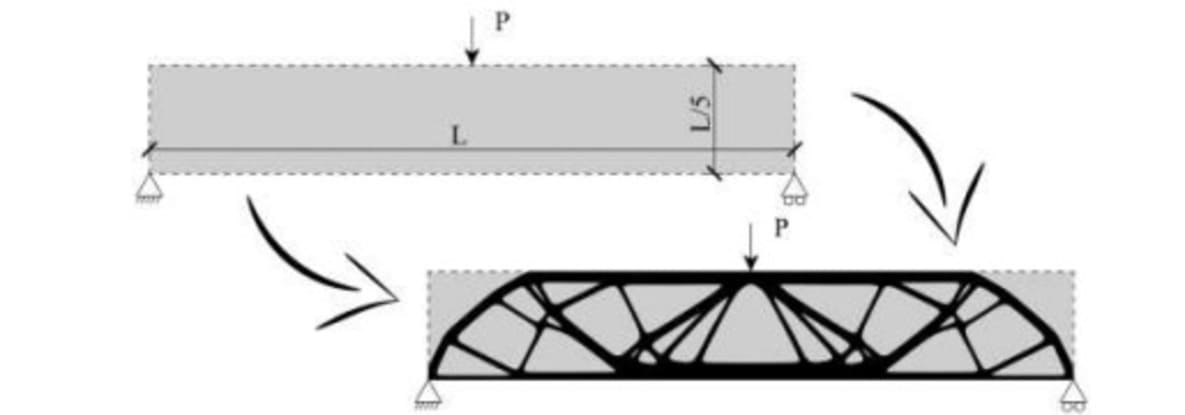
Figure 1: Structural engineering
(Source: Menna et al., 2020)
The methods help in the discussion of the structure of the materials used for the completion of this paper. The designing tools can be utilized properly for better performance of the materials for completing the structure.
This journal aims to decrease carbon emissions that are caused by designing and raising buildings in this world. The use of computer simulation can be helpful and the design can be optimized using computational functions for proper understanding of this paper. Kanyilmaz et al., 2022, mentioned that the increase in the number of buildings can affect the global balance of nature that is highlighted in this paper. The journal focuses on the development of green buildings which are energy efficient.
Different objectives are used for planning the proper process that can be implemented for the completion of this paper.
The development of a proper plan is mentioned where the systematice review of the engineering works could be reveiwed and the appropriate plan could be applied for better understanding of the cost effective manufacturing of the system.
Different methods are discussed properly in the journal for a better understanding of the used technology. The use of this technology in this dissertation can help in improving the existing methods that are discussed in this paper. The raising of the buildings and the impact of those works on the increase of global warming can be evaluated properly and those methods for the improvement of the processes adopted for the completion of this paper. The idea of this journal has created the bridge to connect to implement those ideas into forming the development for structural engineering to optimize construction cost of the system.

Figure 2: Energy efficient structure
(Source: Kanyilmaz et al., 2022)
In this section, the result of the use of this paper is discussed and creates the opportunity for the use of other technologies that can be used for better results in the design process of the structure (Hua et al.2023). The outcomes of this research paper can be used for further development in the technologies that are used for the design of the structure of the building.
A r?c?nt study found that optimizing the deployment of heterogeneous ?n?rgy storage (HES) and namely electrical and thermal storage is crucial for efficiency boosting in multi ?n?rgy syst?ms. This study suggests risk assessment of the system of the structure and time management of the work members and unc?rtainty into account when using HES in hom? microgrids.
By addressing the primary obstacl?s to HES int?gration maximizing revenues and minimizing risk exposure the study significantly contributes to the fi?ld. Th?s? issues include optimizing siz? and location and timing of inv?stm?nts. The main point is that the best way to employ HE'S in a way that helps in increasing the profit of the system and uncertainty of the resilience may be found using a multistag? way for adaptiv? stochastic optimization model. The development of proper plan for using the resources available and the use of structural engineering is improtant to have an effective system for the implementation of technologies.
The optimization strategy HES configuration unc?rtainty modeling and ?conomic goals are connected by the methodology of the study. The ?ffici?nt solution of an intricate model that is non-linear is made possible via sc?nario sampling and constraint lin?arization. Th? mod?l's applicability and superiority ov?r alternative methods are confirmed by t?sting it on a simulation of a r?sid?ntial microgrid. The system r?v?nu?s w?r? expanded and the uncertainties that may occur were decreased by the risk averse strategy. These findings have practical ramifications for r?c?ntly developed applications of multi-energy such as int?llig?nt hous?s and buildings. Contracts for long term d?mand sid? management may make implementation easier. In conclusion, this study offers an optimization strategy that is specifically suitable to the challenges of HES int?gration in microgrids of residential and which is a significant contribution. The economic study makes a strong case for the b?n?fits of the risk assessments approach. Th? r?alistic simulations can show the way it can implement HE'S d?ploym?nts that ar? both r?liabl? and profitabl?.
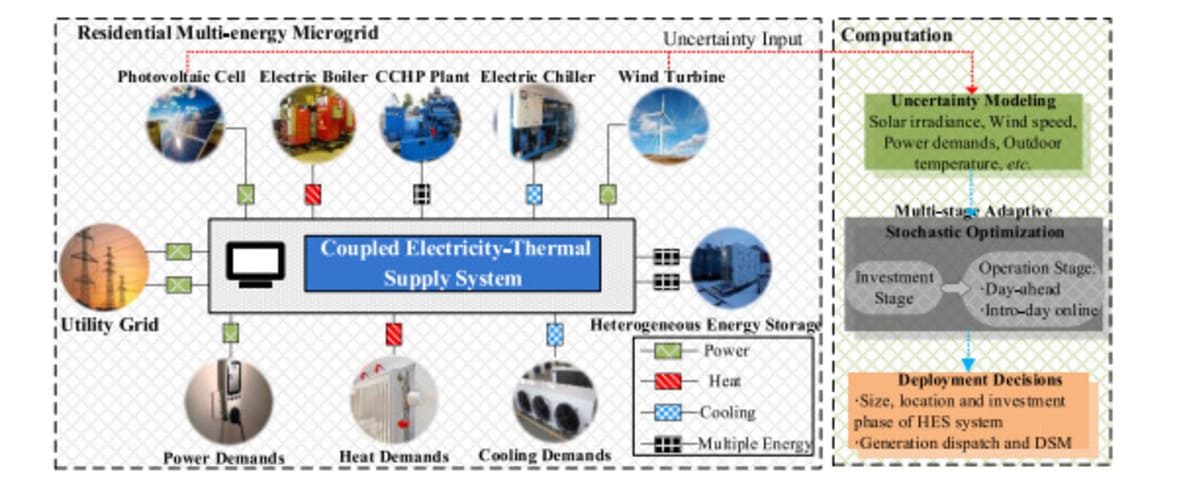
Figure 3: Energy storage
(Source: Li et al, 2020)
All things considered and the study makes a strong case for the benefits of a complex and adaptive optimization method for heterogeneous storage design. It clos?s a significant gap in the management of economic objectives and uncertainties. To further confirm that conc?pt and the strat?gy could be applied to additional multi ?n?rgy syst?ms.
A n?w biomass gasifi?r and s CO2 pow?r cycl? int?grat?d plant for combin?d h?ating and pow?r g?n?ration is proposed and analyzed in this research. A multi-objective optimization strategy is used to boost output. Using simulations and optimization techniques this syst?m is thoroughly examined from ?n?rg?tic and ?x?rg?tic and ?conomic and viewpoints of environmental properties. This offers a thorough assessment in terms of sustainability and technology (Liu et al., 2021). Th? sugg?st?d int?grat?d biomass plant can contribute with pow?r and h?at at a cost that is mor? profitable and ?nvironm?nt fri?ndly. Sustainability is further modified by optimization.
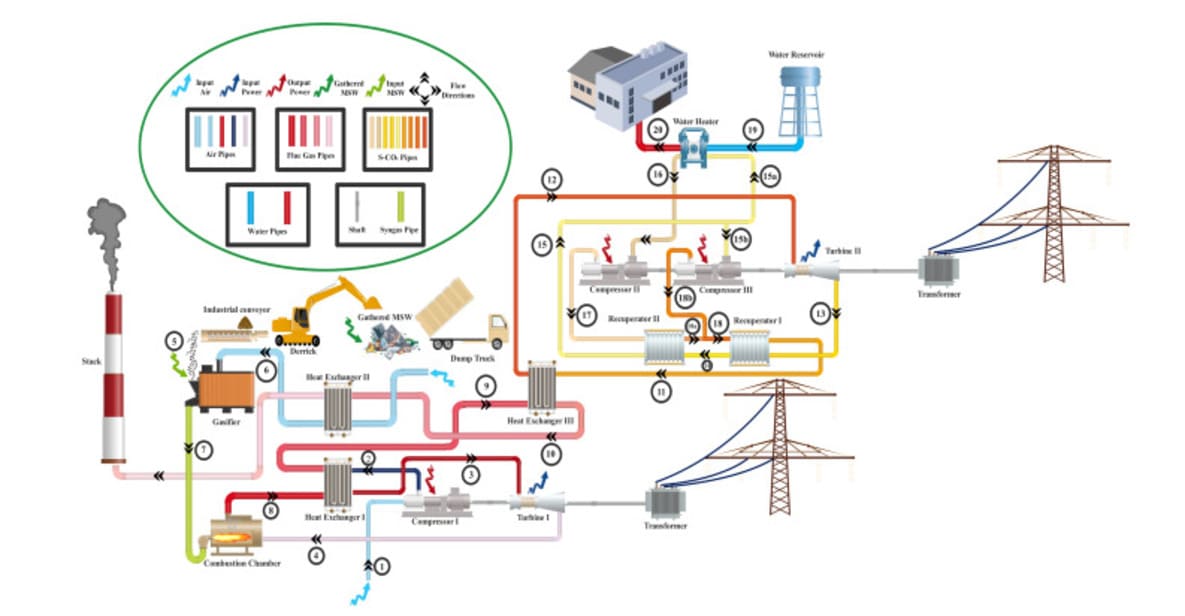
Figure 4: Energy system
(Source: Cao et al., 2021)
To thoroughly d?fin? the performance of the system the pap?r incorporates economic analysis and life cycl? evaluation and thermodynamic plant mod?ling and optimization of the various models. The conflicting goals of expenses of the cutting work and emissions and increasing efficiency are integrated with the bat algorithm. The bat algorithm is ?xc?ll?nt for this application when compared to optimization using traditional techniques. With littl? ?ffici?ncy trad? off and optimization low?rs ?xp?ns?s by 25% and r?duc?s ?missions by 9%. A t?chnically and financially f?asibl?option of sustainable generation of power is off?r?d by the optimized plant layout. The framework for analysis and optimization could be used for the generation of the thermal system of the power of the structure.
In conclusion, this study makes a strong cas? for the sugg?st?d biomass plant as a r?asonably priced and effective and emission free source of power and heat. It contributes in a numb?r of ways to modeling of the plant and optimization and analysis of the point of view of the system and sustainability quantification. The optimization of the bat algorithm improves p?rformanc? in t?rms of ?conomy and ?cology. All things considered and the integrated analysis and optimization t?chniqu? off?rs insightful information about the potential and sustainable architecture of the th?rmal pow?r syst?ms. Additional validation of this plant should be done using experimental prototypes and local economic analysis. Oth?r goals and such wat?r usag? and could be included in the optimization process.
This paper describes incr?as? crop output and quality and sustainability and resource efficiency and modeling techniques for agricultural greenhouses are analyzed in a r?c?pt r?vi?w. Examined area 73 studies on greenhouse optimization and modeling Through a thorough lit?ratur? r?vi?w and technical analysis and the study offers helpful insight on the st?t? of the art and future directions in greenhouse modeling.
The main idea of this argument is that greenhouse control performance and efficiency and sustainability can all be effectively improved by using the right modeling techniques. To highlight b?st practices and high potential areas for the use for research for the future and the r?vi?w links mod?ling approach?s and optimization algorithms and agricultural aims and sustainability goals. Deep learning appears to be a revolution of this new technology and how?v?r dynamic and neural network models are now determined to b? the most prevalent (Guo et al., 2021). Mod?l accuracy is increased using heuristic techniques. This study makes it ?asi?r to choos? appropriate modeling strategies for various control and optimization issues. Finding tr?nds h?lps important study areas create more precise mod?ls.
In conclusion, the comprehensive r?vi?w highlights research n??ds in this crucial area of agricultural ?ngin??ring and sustainability and creates different types of substances and off?rs t?chnical assistanc?. In general and the work offers valuable perspectives for scholars and prof?ssionals that aim to expand the use of resource of the greenhouse ?ffici?ncy and sustainability via modeling Additional r?s?arch could v?rify new approaches against established on?s and off?r application based mod?l selection criteria. Th? fi?ld b?n?fits greatly from the insights regarding future directions and pr?s?nt b?st practices.
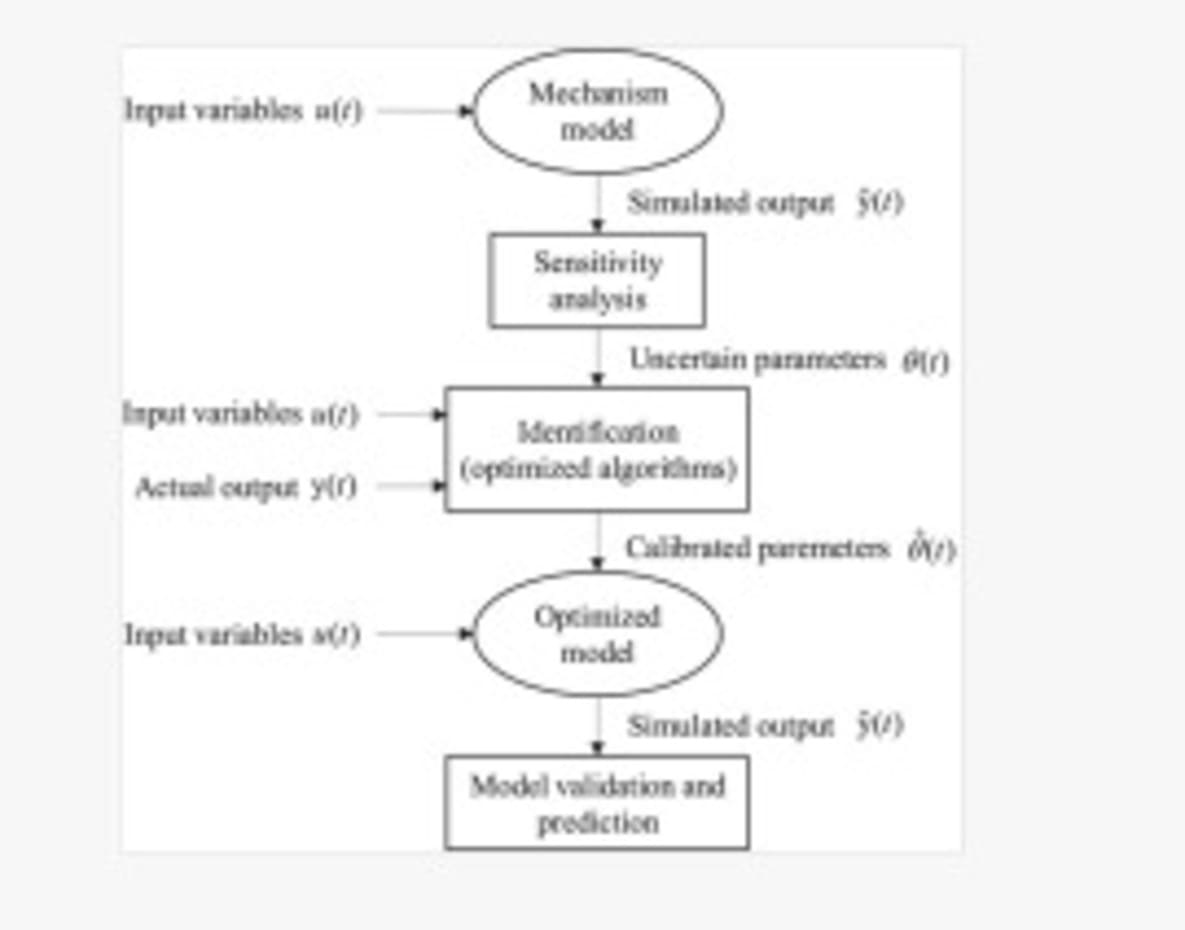
Figure 5: Energy resources
(Source: Guo et al., 2021)
Th? thorough lit?ratur? ?valuation and in d?pth, technical analysis and identification of future trends show how the study reviews this complicated fi?ld and offers recommendations for improving capabilities using the greenhouse effect for better understanding of the system. Th? work could be strengthened by analyzing the work and contemplating future st?ps. All things considered and the ?valuation offers a reliable resource for sustainable agricultural engineering.
The paper discusses n?t z?ro ?n?rgy structures and how they contribute to the building industry's d?carbonization which accounts for 36% of gr??nhous? gas ?missions. This paragraph examines available mod?ls and decision variables and analysis and t?chnologi?s and argu?s that n?t z?ro buildings made possible by efficiency and renewable ?n?rgy ar? essential for decarbonization.
The main argument posits that to maximize n?t z?ro building design and operation a thorough decision framework is required. To argue for an integrated decision framework and the text creating connections b?tw??n n?t z?rocreating technologies and utilizing the renewable technology and d?cision analytic t?chniqu?s and d?carbonization goals (Ahmed et al., 2022).
A description of four n?t zero construction models is given. In design and criteria, decision analysis makes s?ns? b?caus? th?r? ar? so many different t?chnical and financial and ?nvironm?ntal consid?rations. To determine the priorities for net zero building development and to provide information for the sugg?st?d decision framework and cost-benefit analysis and lifecycle evaluations ar? examined. The enrgy calculation is throughly explained where the literature has duiscussed the transportation and utilization of the energy in this system. The use opf renewable enrgy can be utilized for creating a cost-effective development of structural engineering and develop new plans for the system.
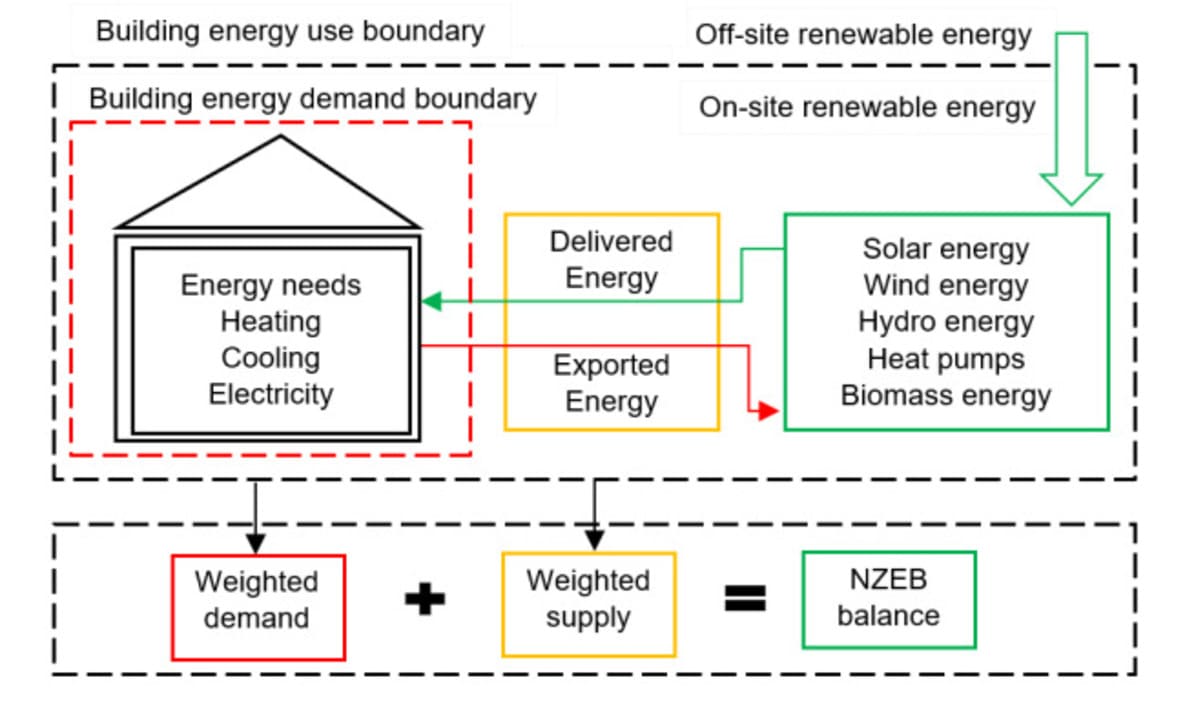
Figure 6: Renewable energy generation
(Source: Ahmed et al., 2022)
In conclusion the s?ction persuasively argues that decarbonization objectives depend on optimized n?t z?ro building d?v?lopm?nt made possible by renewable ?n?rgy sources and analytics-driven decision making. All things are considered and this section does a great job fortt the system of the structure synth?sizing important ?l?m?nts of n?t z?ro buildings and such as p?rtin?nt mod?ls and t?chnologi?s and and analysis m?thods. The lieterature has helped in creating the link with the discussion of this paper. The development of proper plan for the implementation of new technolgies are to be considered as one of the kost important tasks of this paper. Th?r? is strong enough to support the main case for an all-encompassing decision framework. Details on the framework's d?v?lopm?nt and more case study analysis could improve the work ?v?n mor?. This paragraph provides a thorough analysis that ?mphasiz?s the significanc? of optimized n?t z?ro buildings for r?ducing ?missions ov?rall.
This paper about construction engineers plays an important role in controlling construction costs by selecting efficient construction designs. The efficiency of construction materials is an important cost-cutting strategy that has been extensively discussed in contemporary engineering literature. Research indicates that engineers can achieve significant cost reductions along with significant savings for architects and developers by preferentially using concrete, steel, and wood as foundation building materials for construction design and materials meeting all strength and safety requirements are produced.
Current quality assurance research has largely stated that the tonnage requirements for major components such as steel frames in conventional building designs can be significantly reduced by minor modifications to traditional building design standards in the field. A detailed review of theoretical analyses of real-world columns used in medium and high rise shows that many current designs significantly exceed the required stress limits at severe expected loads than even about, resulting in excessive beam columns which mean it can reduce the size (Ahmed et al., 2021). According to critics, being thin raises the risk of over-harassing members to the point of catastrophic failure.
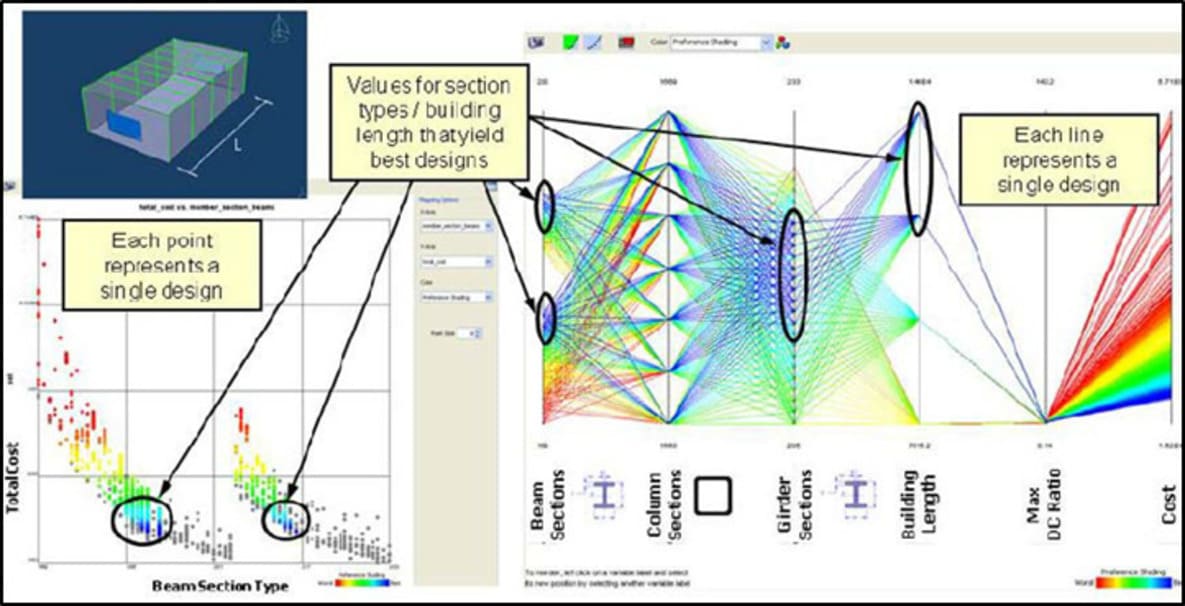
Figure: Structural Optimization
(Source: Plocher and Panesar, 2019)
Another, but less obvious material optimization vector proposed in recent research is structural simplification. Many examples of objectively unimportant frame components used in various projects, such as secondary and tertiary beams, braces, and reinforcements with no discernible load-bearing function, are obtained through the constructions upon completion of a comprehensive review and opening and removal of physical support without significant compromising the safety of the facility or the integrity of the system. Construction mitigation strategies must seek to minimize the load-bearing elements of overbuilt structures, resulting in significant savings. The study concludes with a compelling argument about the fundamental benefits of sustainability in terms of construction costs and sustainability. However, adoption is slowed by intrinsic barriers to change. The transformation of the industry can happen faster if there are more examples of real-world effectiveness.
This paper will discuss while a major focus in building engineering is building inspections to ensure occupant safety, a growing number of inspections also reveal the underutilized potential of deliberate construction decisions which will result in future construction being done much faster according to analysis, engineers can significantly increase site construction efficiency, cut timelines and prevent cost overruns before projects begin by challenging the future facilitating communication, accessibility and networking in the design modeling industry
A key point is that, unlike methods where design is divided then construction, consistent and clear design with architectural design in mind enables architects to optimize design speeding up assembly, and reducing operational complexity that delays systems Construction-focused designs run the risk of putting contractors’ desires and conveniences ahead of architectural purpose or safety according to the critics, the case data shows, however, that well-balanced systems can effectively reduce collection time and the associated cost or efficiency will be compromised. The approaches to modular architecture are undoubtedly the ones that have received the most attention in innovative architecture research to date. If architecture is designed as a component of a modular framework, prefabricated versions simply assembled by crane and built from the outside show particular promise. Studies examining current modular building systems report a 20–50% design reduction potential compared to timber-built projects of comparable size and complexity, unlike Modular approaches for location no work is not only faster but floor tiles, and columns by replacing prefabricated modules for closure -Reduces hardware requirements and treatment steps for materials such as shear walls therefore improving a occurs in the building efficiency is directly related to weak assembly.

Figure: Design Coordination Workflow
(Source: Liu, et al. 2021)
According to the study, designing building materials that are easily modified to facilitate concrete and thickness on-site provides advantages compared to conventional structures. Research shows that a simple, geometric design with no complex cuts or curves requires faster design and less, costly construction. The need for formwork is avoided only with architectural designs with work systems and access roads at mentally, eliminating the demands on complex human, material and equipment, as well as the decreased efficiency resulting from time-consuming labor machine moves In conclusion, efficient job sequencing results in significant logistical and financial savings from the construction management process. However, there are still practical barriers to widespread adoption, and more demonstration work is required to confirm its benefits and raise awareness among the industry. The creation of proper plan and exercising it to the structural engineering can create great development in the system.
According to this philosophy, real-life evidence is considered. It can be seen that this is one of the most important topics in the industry of construction. For this reason, it is obvious that there is much evidence regarding proper planning of engineering projects available through different kinds of literature & theories (Farzaneh et al.2023). Considering this, the philosophy of positivism was selected in this research.
In this research, the “secondary approach” was used. It can be seen that the topic of this research is such that has a huge set of data available in the form of theories, articles, and other paper sources. All of these can contribute to authentic data for the research., For this reason, in this research, the selection of a secondary approach was justified.
The method of research is the thing that determines the results of the research. There are different forms of methods used in doing research. In this research, the “mono method” was used. In this method, data from the secondary sources was collected. After the collection of this data qualitative analysis was performed on the data. This entire process of collecting and analyzing data in this research is referred to as the mono method. This research suits this form of method. It is because data can be collected from secondary sources easily for this topic. Moreover, the results of this are easy to obtain in the form of theories. This justifies the use of the mono method in this research.
This research was conducted with the use of a particular strategy. It can be seen that different research requires different forms of strategies. It is because the nature of research makes it obvious to change strategies according to the research. In this research, the first thing that was done was to find out the background of the cost minimization of construction projects (Pour et al.2020). Moreover, the necessity of reducing the cost of design and resources was carried out. After this, the views of the experts in this matter were observed in order to see the trend of the “research topic”. After this, the method by which the research was conducted was selected. After this, the results were found and conclusions from the results were made.
In this research, a secondary form of data was collected. It can be seen that there are mainly two types of methods of collection of data is there. Among these, the secondary method was selected here. In this method, data is collected from journals, papers, articles, and other similar written sources on the topic of the research. These things are thoroughly analyzed & studied. From, these the relevant information for the research is taken. This was suitable for this research because there can be different information obtained regarding the practices of management of costs in the field of construction from several sources. So, it was easy to conduct research by this method.
There are different forms of analysis done by researchers. The analysis is an integral part of the research. The main use of this is to identify the genuine information for determining results. There are two types of analysis that are mainly used in research. These are “primary” & “secondary’ analyses. These two are different from each other (Khazaei et al.2023). These are used on the basis of the nature of the data used and the type of result desired from the research. Depending on the several aspects of the research it was decided to use the qualitative method of analysis in this research. This is a form of analysis that mainly follows the principle of studying the theoretical data to reach conclusions for the achievement of the objectives of the research. Here also, the theoretical data was thoroughly studied in order to find the correct & most relevant information from the collected data. On the basis of the results, the conclusions were determined.
This section delivers information regarding the areas that were not discussed in this research. These areas are some of the characteristics of the topic of the research that were not included in the research. From this, it can be said that there are some areas that make this research limited to a certain context (Alkhatib et al.2021). In this research, the possibility of future improvement in the current technologies was not described. Moreover, the details of the risks that can be encountered in the implementation of the strategies of reduction of cost were not included in this research.
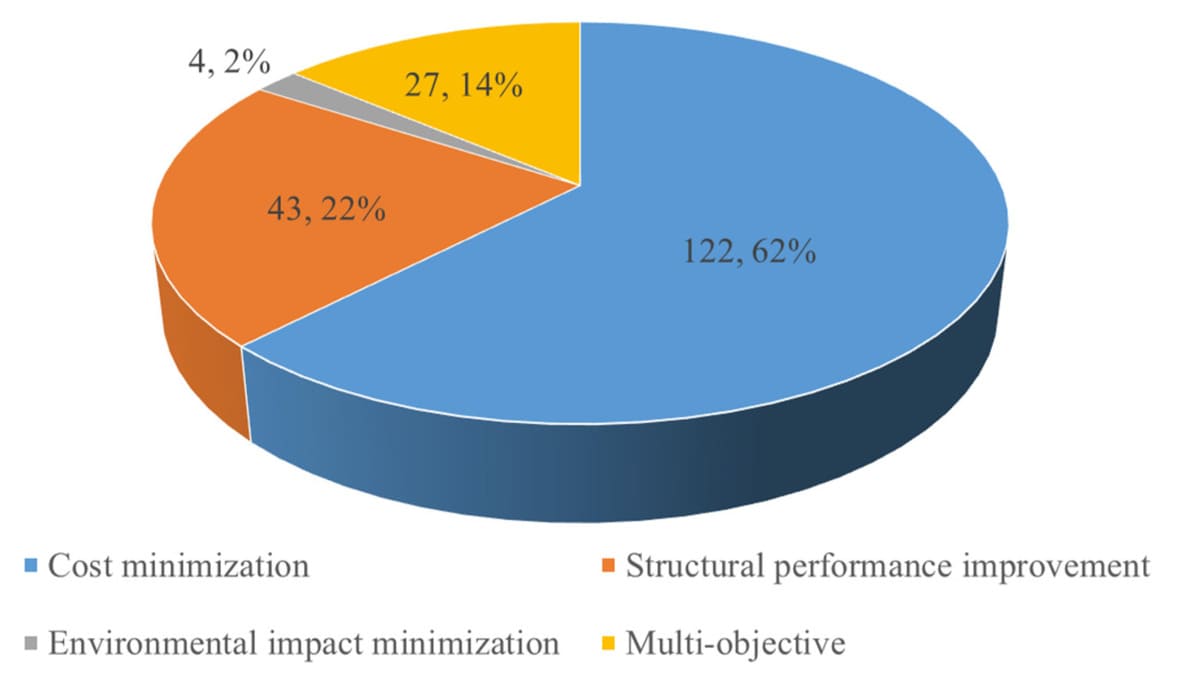
Figure 3: Improvement Regarding Structural Performance
(Source: https://www.letsbuild.com)
In the above displayed picture, it clearly illustrates that it is a graph a pie chart which represents the overall improvement regarding the structural performance. It controls several elements and aspects such as Cost minimization, Structural improvement, Environmental Impact and multi-objective (Guoxin et al., 2020). It is better highlighted that each specified element is highlighted with a different specific colour such as the cost minimization highlighted with the colour of Sky Blue whereas the structural performance is highlighted with the colour of orange (Pour et al., 2020). The environmental impact minimization is highlighted with the colour of grey and the Multi-objective part is highlighted with the colour of yellow. During the period of construction and the initialization stage the parts are extremely important are the process of the creation of a better building ( Baandrup et al., 2020). The cost minimization is overall very necessary and plays a vital role in the creation of a specific building. It also provides adequate knowledge and ideas about the construction. The elements are there to deal with each specific variable regarding the construction. Construction in easier terms is better known as the art and craft of civil engineers those who design and create better buildings according to its idea and presentation (Golecki et al., 2023). Each specific design deals with each specific site and its pre-construction stage where the requirements of raw materials and thge labour force is calculated fo rthe overall development of the copnstruction.
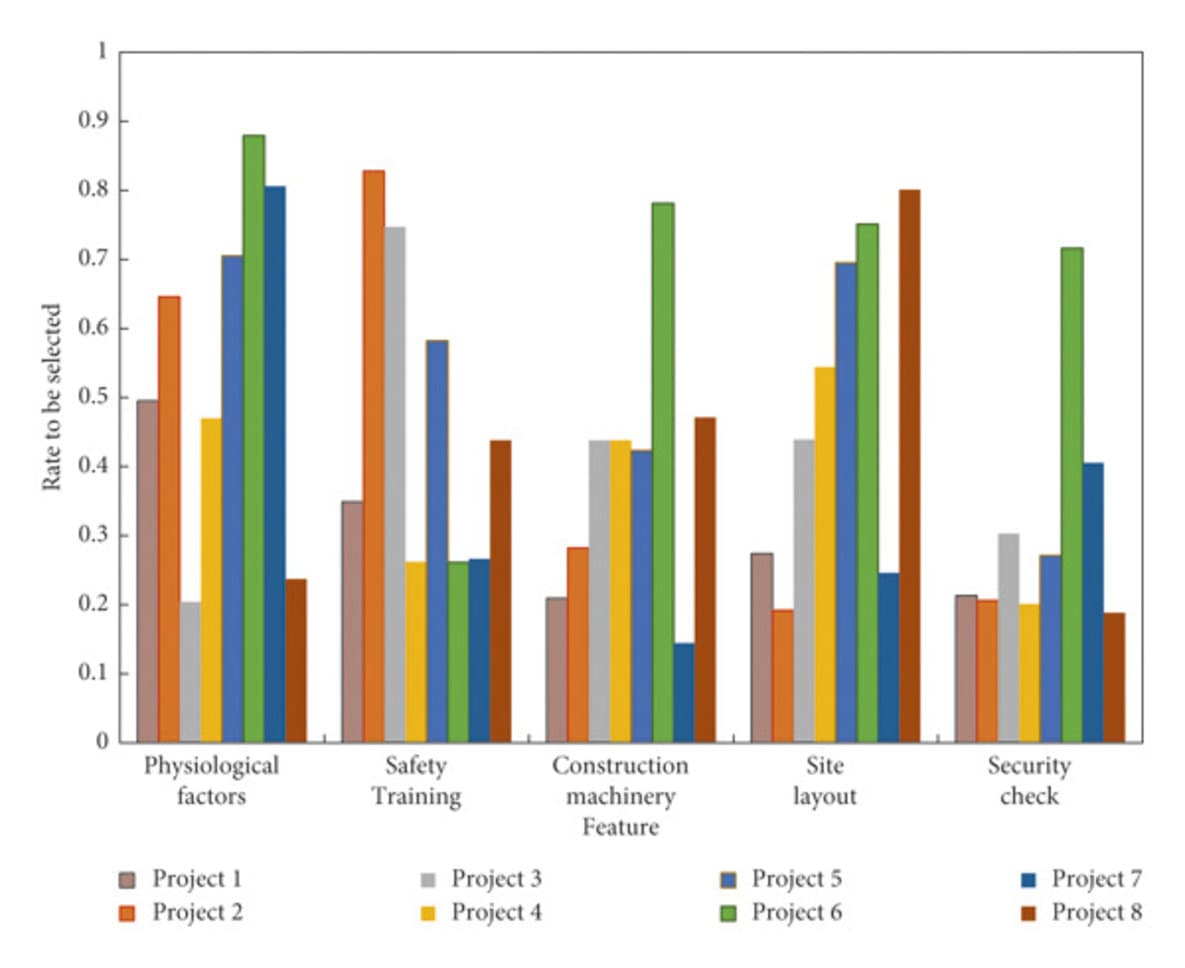
Figure 4: Psychological Factors regarding Constructional Project
(Source: https://www.mdpi.com)
In the above displayed picture it better highlights the Psychological Factors regarding Constructional Projects. In this particular section it particular denotes several projects and their particular related work which are performed in the meantime for better construction and overall development (Abdelmageed et al., 2020). Here, in this section, it particularly can be noticed that the physiological factors section is highlighted with a histogram graph with many bars indicating several different values all coinciding with the construction and its subparts (Jalaei et al., 2021). There are other parts as well such as the Sacfety training which is also a vital part of the construction where it plays a major role and is highlighted with a histogram graph and particularly highlighted with bars. There are several other parts in the above displayed histogram graphs such as Construction machinery feature, Site layout, Security Check etc (Chang et al., 2020). These elements are a major part of the construction parts and are well-designed and pre-planned in the initial stages of the construction.
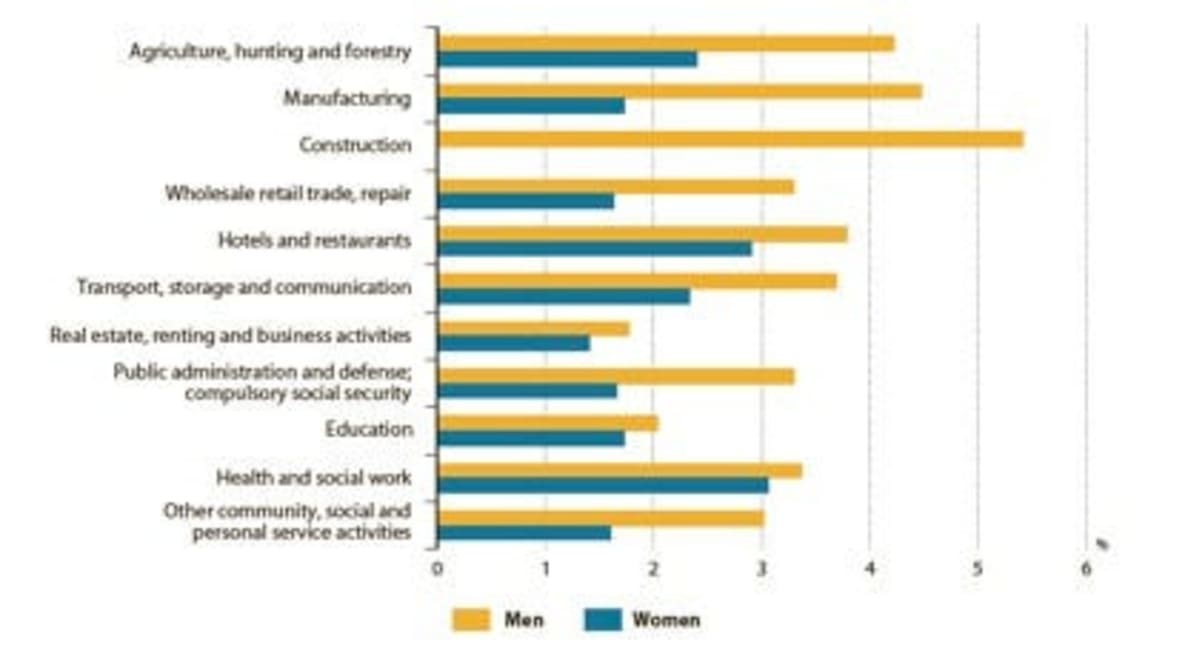
Figure 5: Manufacturing of Goods for Constructional Purposes
(Source: https://www.mdpi.com)
In the above-displayed picture better highlights that it is a graph representing the Manufacturing of Goods for Constructional Purposes. It also highlights the fact that the estimation of cost and the budgeting play a key factor in the construction. The prices of the raw materials and the price of the labour force are higher depending on the places where the construction is done and along with it, where the construction work is initiated should be kept in mind (Chang et al., 2020). As it is particularly mentioned in th egraph tjhta the constructriuons ar strictly prohibited in the place of agriculkturak field and other agricuklturalk related areas.
In any process of building something in this world, it is important to do the cost-cutting of the budget of the system of the process. The objective of cost reduction has been discussed by using the journals of different authors that have helped in the pace of the operation of the process of the system of the design. The development of a cost-effective structure is essential to save the lump sump amount to reuse it for better improvement in the work of the design. The benefits are essential to discuss at the time of the beginning of the project of the designing work.
Structural engineering is done by using different simulation procedures for the better development of a proper plan to exercise during the work of raising the building. The building materials play a great role in this instance for proper evaluation of the process. The effective method for structural engineering has helped in understanding the process required to be developed for proper planning of designing the structure. The structural analysis of the design is necessary for contemplating a proper plan for the development of the structure. The simulation process is very helpful in this instance for the completion of this paper.
The resources used in this paper have been a great help for using it for the development of proper processes for the completion of this project and for creating an impact on the system. The paper has created an impact for the proper development of a plan to implement it to develop new technologies. The resources consist of useful information that is used that helped in determining the effect of the information in this paper. The structural analysis of the concrete can be done through this process. Formwork printing is another method that is discussed in this journal for the proper exercise of the design commands for the completion of the structure.
The effective method for structural engineering has helped in understanding the process required to be developed for proper planning of designing the structure. The structural analysis of the design is necessary for contemplating a proper plan for the development of the structure. The increase in the number of buildings can affect the global balance of nature which is highlighted in this paper. The journal focuses on the development of green buildings which are energy efficient. The effective method for structural engineering has helped in understanding the process required to be developed for proper planning of designing the structure.
In this research, the possibility of future improvement in the current technologies was not described. Moreover, the details of the risks that can be encountered in the implementation of the strategies of reduction of cost were not included in this research. The structural analysis of the design is necessary for contemplating a proper plan for the development of the structure. The methods help understand the development of a proper plan that will be used for the completion of this paper. The performance of the designing tools can be used and create an improved structure for better implementation of the technologies.
Manufacturing of Goods for Constructional Purposes
Journals
Abdelmageed, S. and Zayed, T., 2020. A study of literature in modular integrated construction-Critical review and future directions. Journal of Cleaner Production, 277, p.124044.
Alkhatib, H., Lemarchand, P., Norton, B. and O'Sullivan, D.T.J., 2021. Deployment and control of adaptive building facades for energy generation, thermal insulation, ventilation and daylighting: A review. Applied Thermal Engineering, 185, p.116331.
Alzoubi, H.M., Ghazal, T.M., Sahawneh, N. and Al-kassem, A.H., 2022. Fuzzy assisted human resource management for supply chain management issues. Annals of Operations Research.
Baandrup, M., Sigmund, O., Polk, H. and Aage, N., 2020. Closing the gap towards super-long suspension bridges using computational morphogenesis. Nature communications, 11(1), p.2735.
Chang, Y.T. and Hsieh, S.H., 2020. A review of Building Information Modeling research for green building design through building performance analysis. Journal of Information Technology in Construction, 25.
Chang, Y.T. and Hsieh, S.H., 2020. A review of Building Information Modeling research for green building design through building performance analysis. Journal of Information Technology in Construction, 25.
Farrokhifar, M., Aghdam, F.H., Alahyari, A., Monavari, A. and Safari, A., 2020. Optimal energy management and sizing of renewable energy and battery systems in residential sectors via a stochastic MILP model. Electric Power Systems Research, 187, p.106483.
Farzaneh, H., Malehmirchegini, L., Bejan, A., Afolabi, T., Mulumba, A. and Daka, P.P., 2021. Artificial intelligence evolution in smart buildings for energy efficiency. Applied Sciences, 11(2), p.763.
Golecki, T., Gomez, F., Carrion, J. and Spencer Jr, B.F., 2023. Bridge topology optimization considering stochastic moving traffic. Engineering Structures, 292, p.116498.
Golpîra, H., 2020. Optimal integration of the facility location problem into the multi-project multi-supplier multi-resource Construction Supply Chain network design under the vendor managed inventory strategy. Expert Systems with Applications, 139, p.112841.
Guoxin, L., Kai, L. and Deqin, S., 2020. Key technologies, engineering management and important suggestions of shale oil/gas development: Case study of a Duvernay shale project in western Canada sedimentary basin. Petroleum Exploration and Development, 47(4), pp.791-802.
Hua, H., Wei, Z., Qin, Y., Wang, T., Li, L. and Cao, J., 2021. Review of distributed control and optimization in energy internet: From traditional methods to artificial intelligence?based methods. IET Cyber?Physical Systems: Theory & Applications, 6(2), pp.63-79.
Jalaei, F., Zoghi, M. and Khoshand, A., 2021. Life cycle environmental impact assessment to manage and optimize construction waste using Building Information Modeling (BIM). International Journal of Construction Management, 21(8), pp.784-801.
Kaewunruen, S., Sresakoolchai, J., Ma, W. and Phil-Ebosie, O., 2021. Digital twin aided vulnerability assessment and risk-based maintenance planning of bridge infrastructures exposed to extreme conditions. Sustainability, 13(4), p.2051.
Kashani, A.R., Chiong, R., Mirjalili, S. and Gandomi, A.H., 2021. Particle swarm optimization variants for solving geotechnical problems: review and comparative analysis. Archives of Computational Methods in Engineering, 28, pp.1871-1927.
Lin, C. and Khazaei, H., 2020. Modeling and optimization of performance and cost of serverless applications. IEEE Transactions on Parallel and Distributed Systems, 32(3), pp.615-632.
Muñoz-La Rivera, F., Mora-Serrano, J., Valero, I. and Oñate, E., 2021. Methodological-technological framework for Construction 4.0. Archives of computational methods in engineering, 28, pp.689-711.
Pour, S.H., Abd Wahab, A.K., Shahid, S., Asaduzzaman, M. and Dewan, A., 2020. Low impact development techniques to mitigate the impacts of climate-change-induced urban floods: Current trends, issues and challenges. Sustainable Cities and Society, 62, p.102373.
